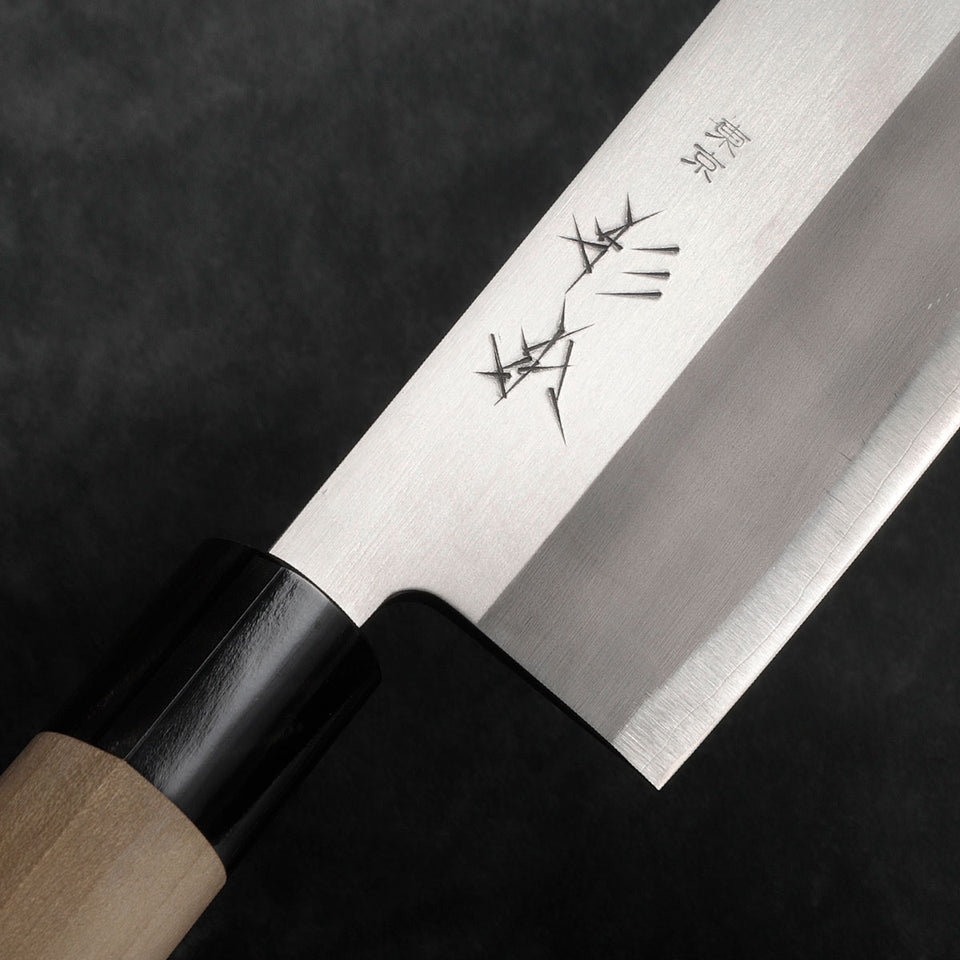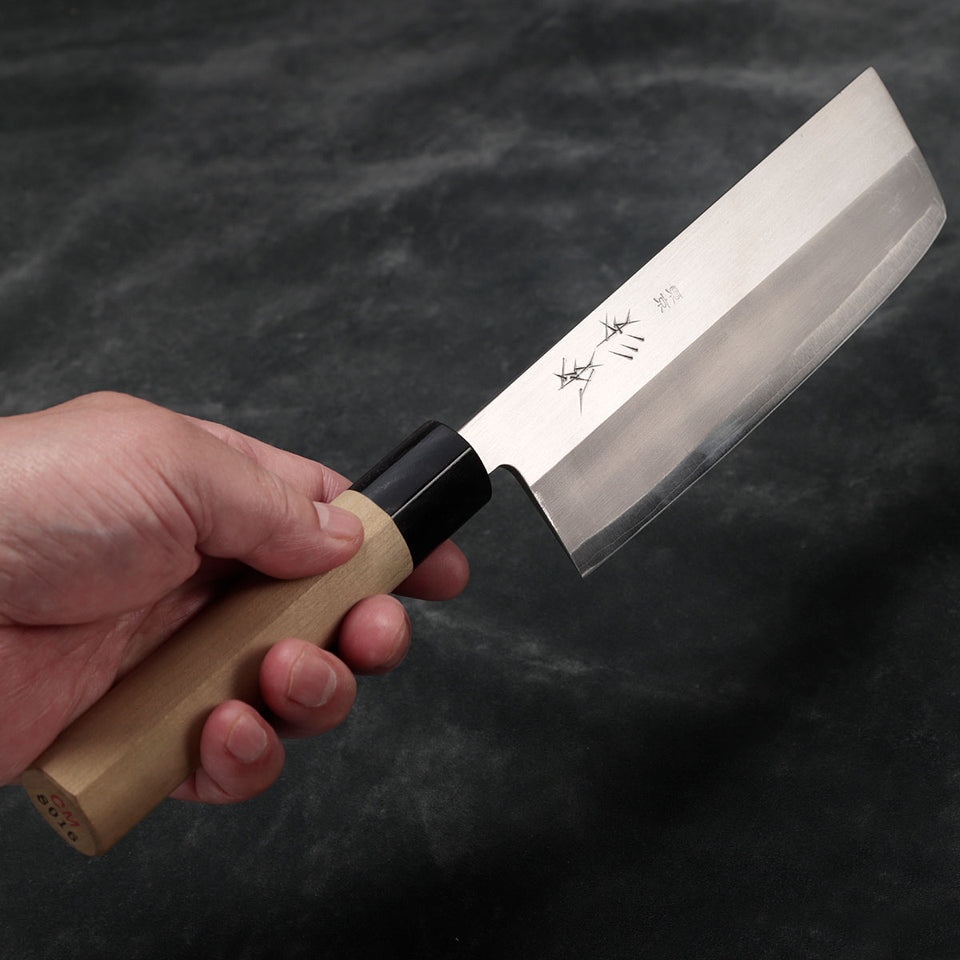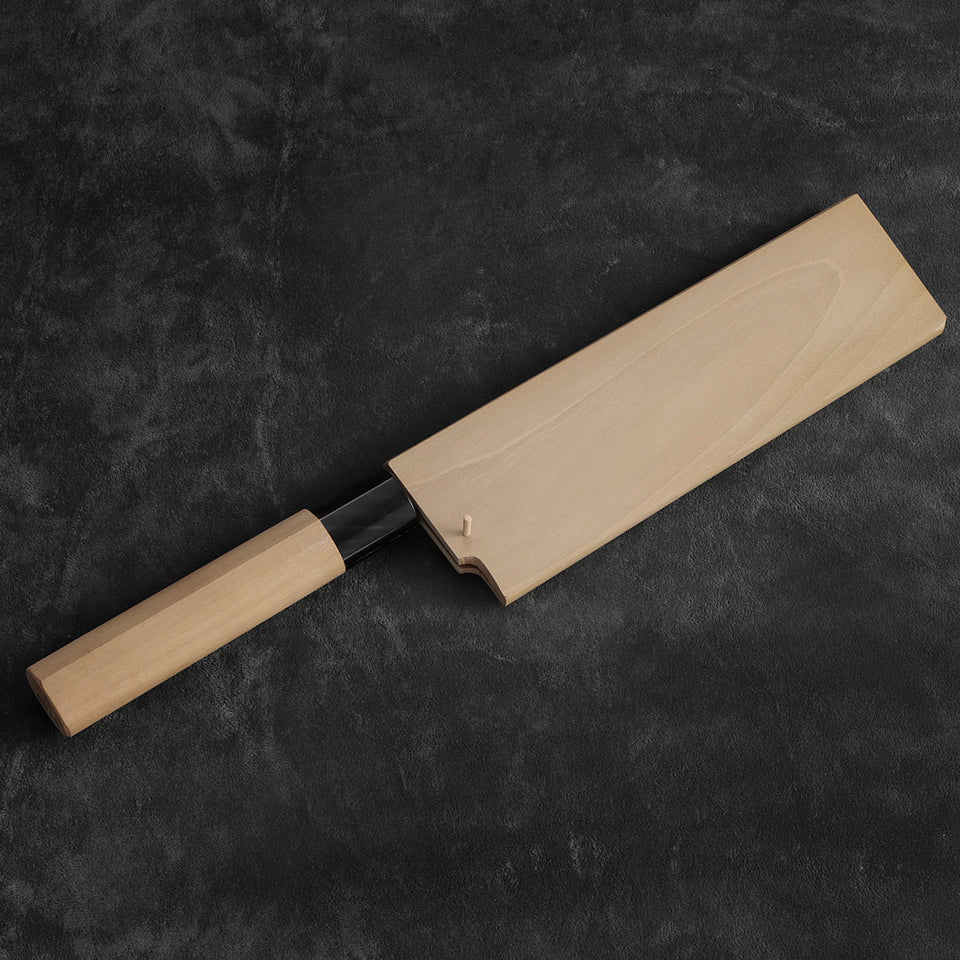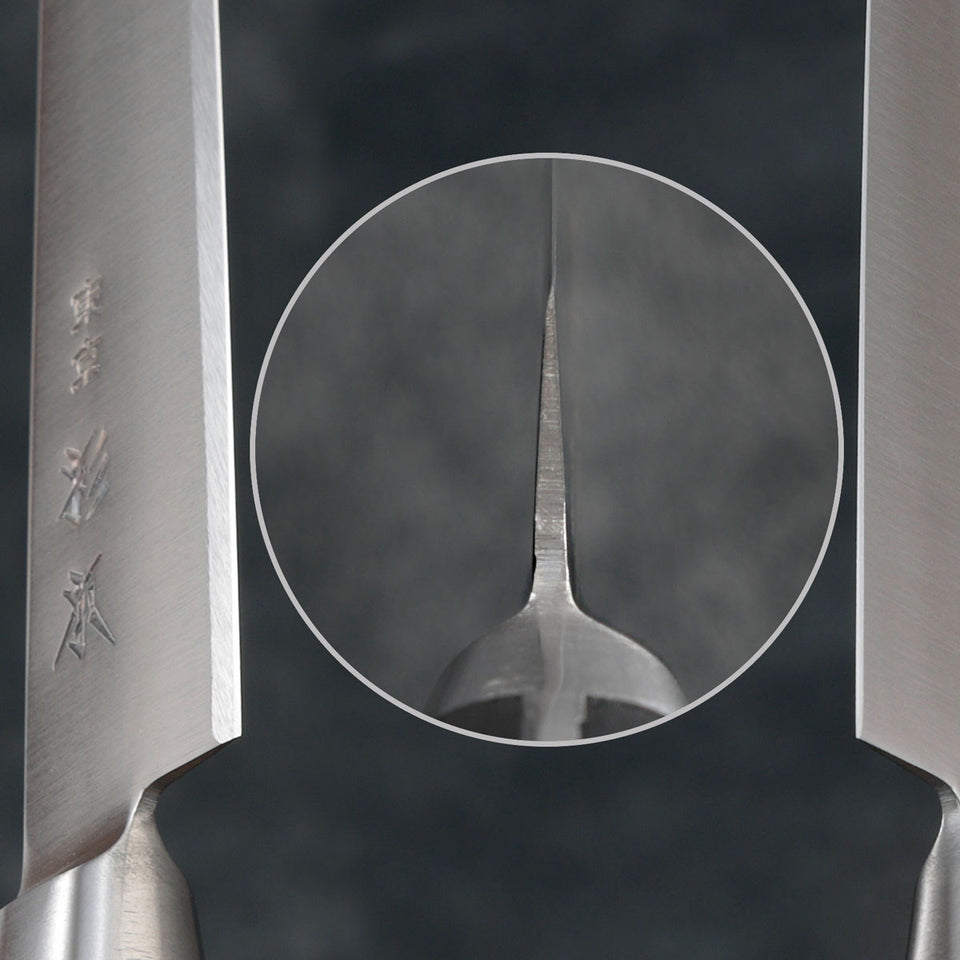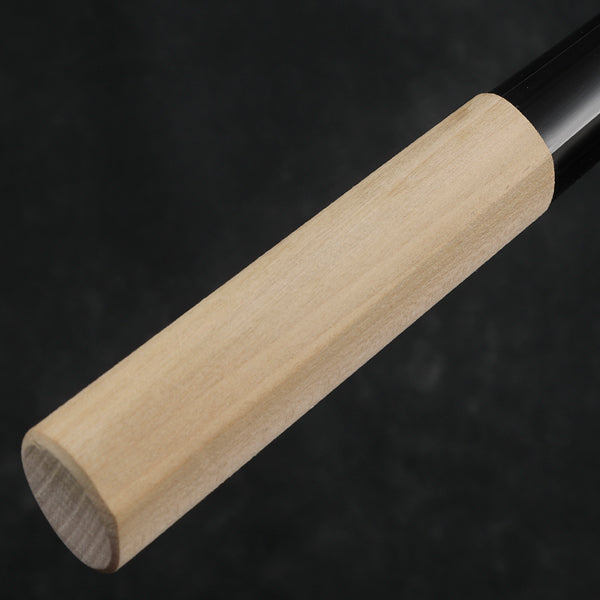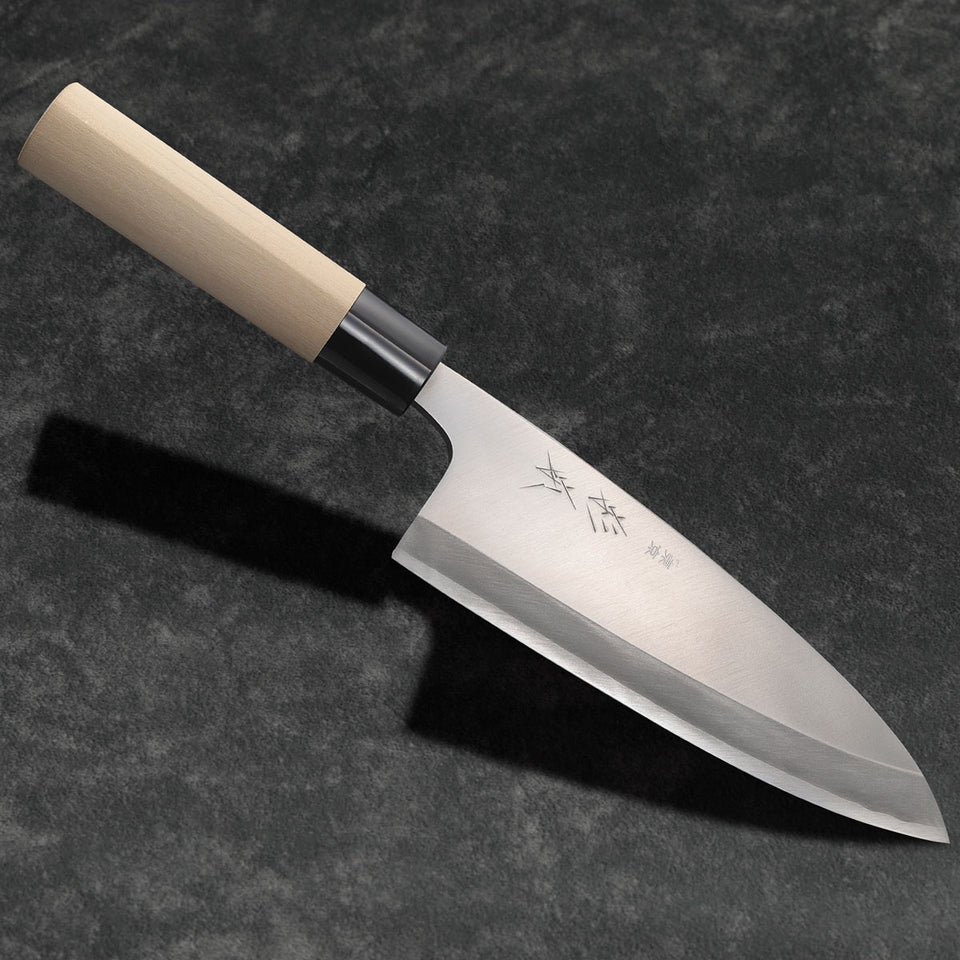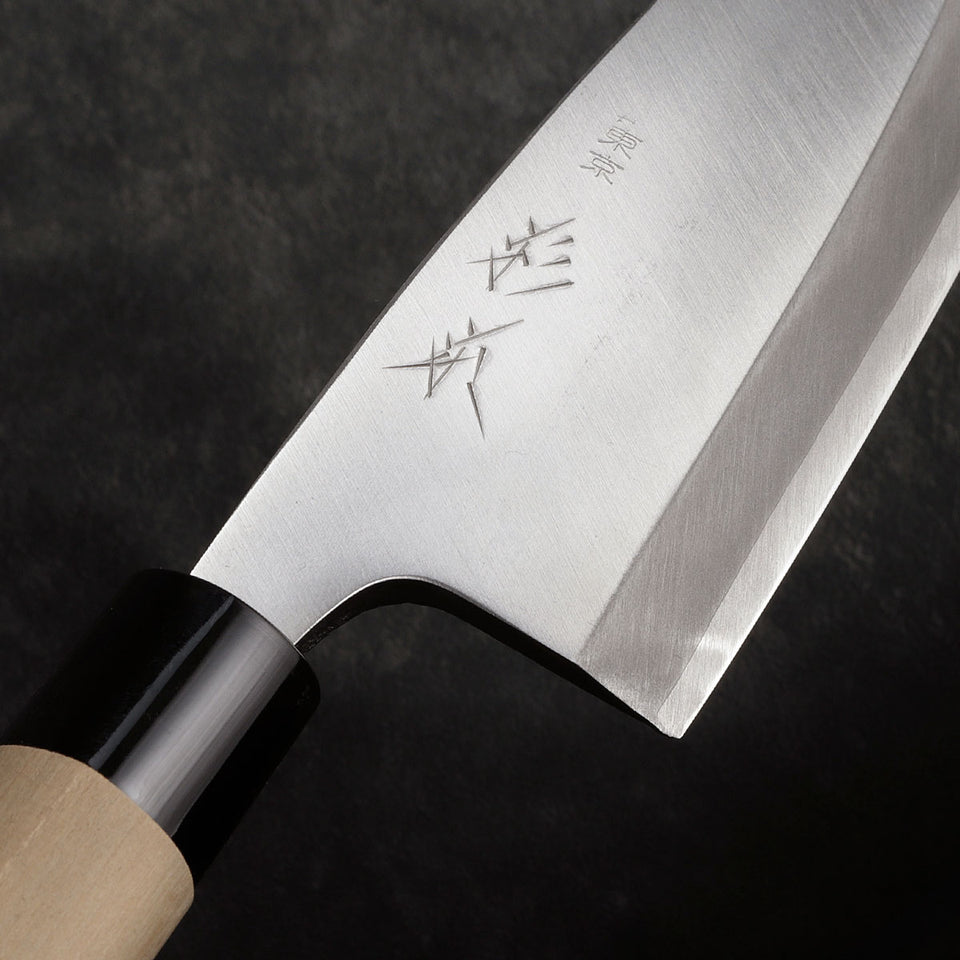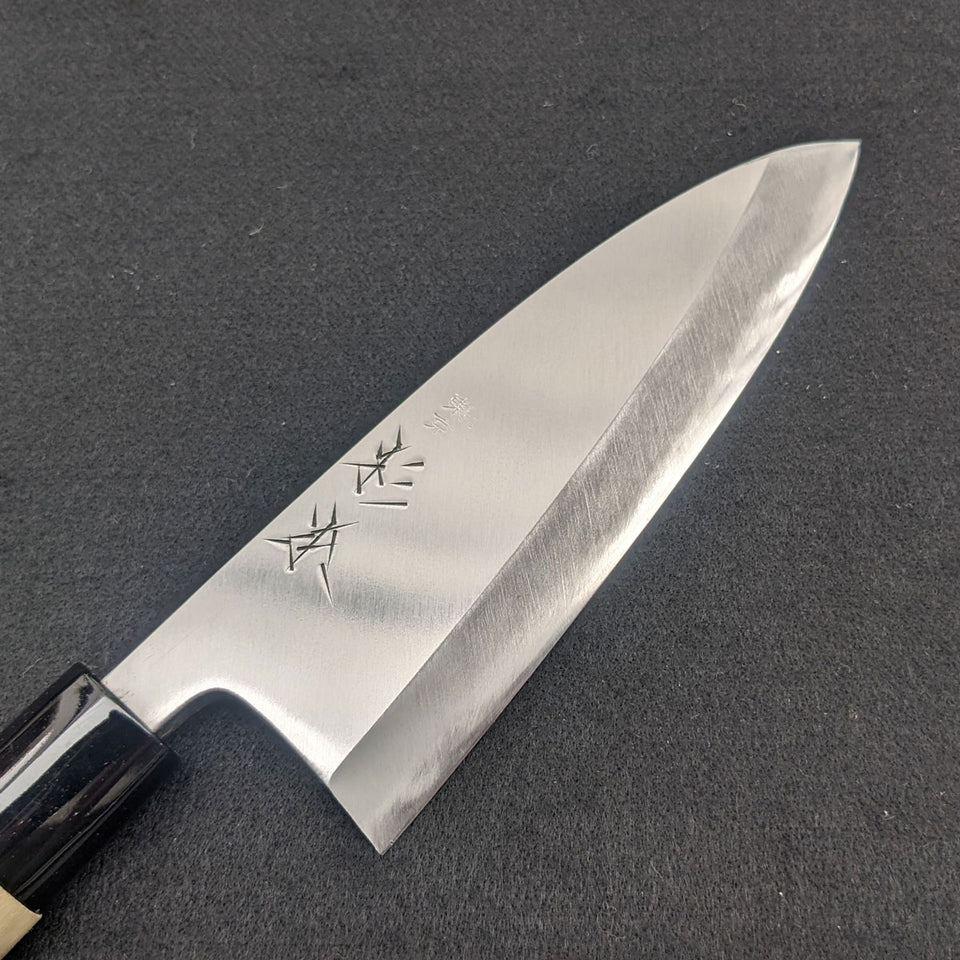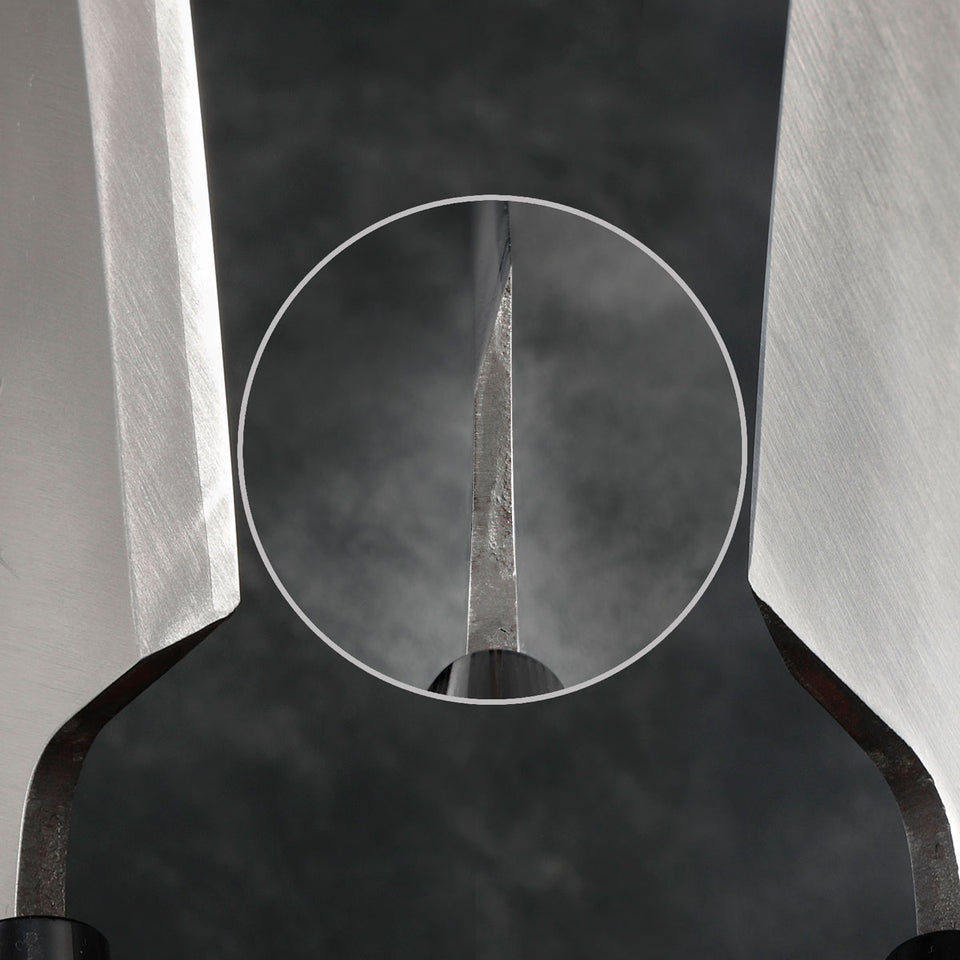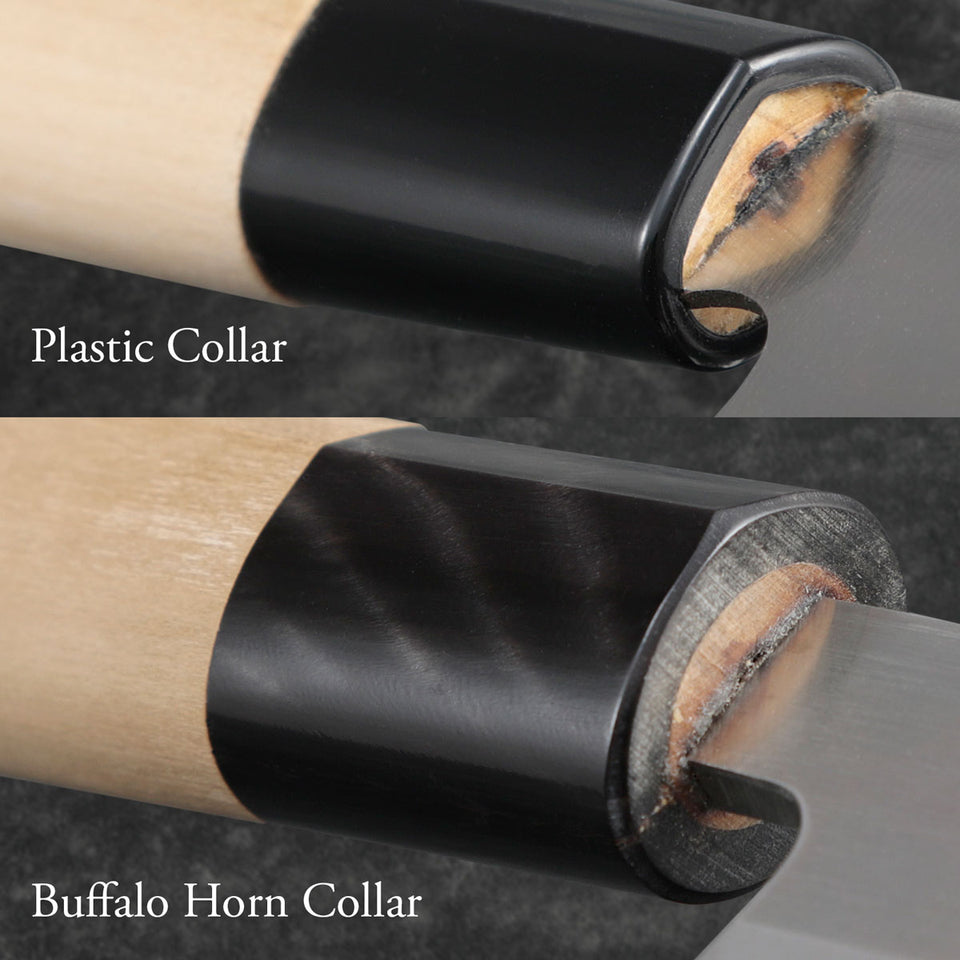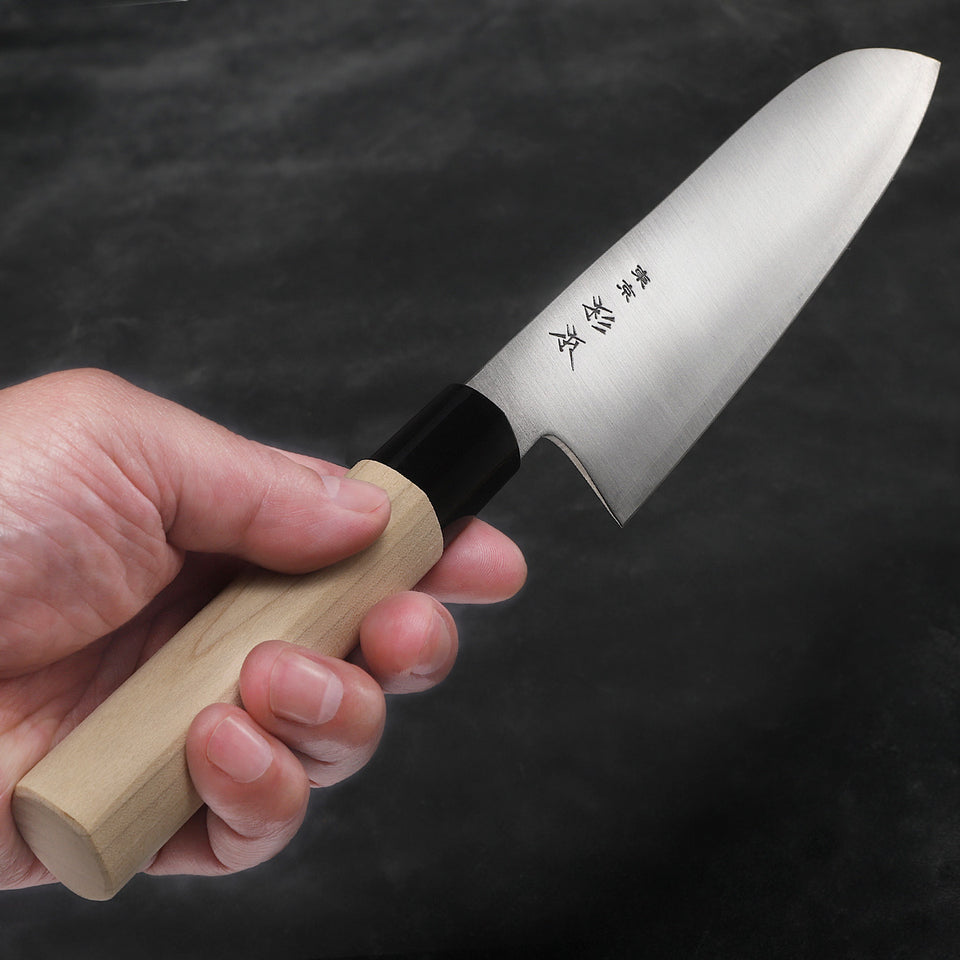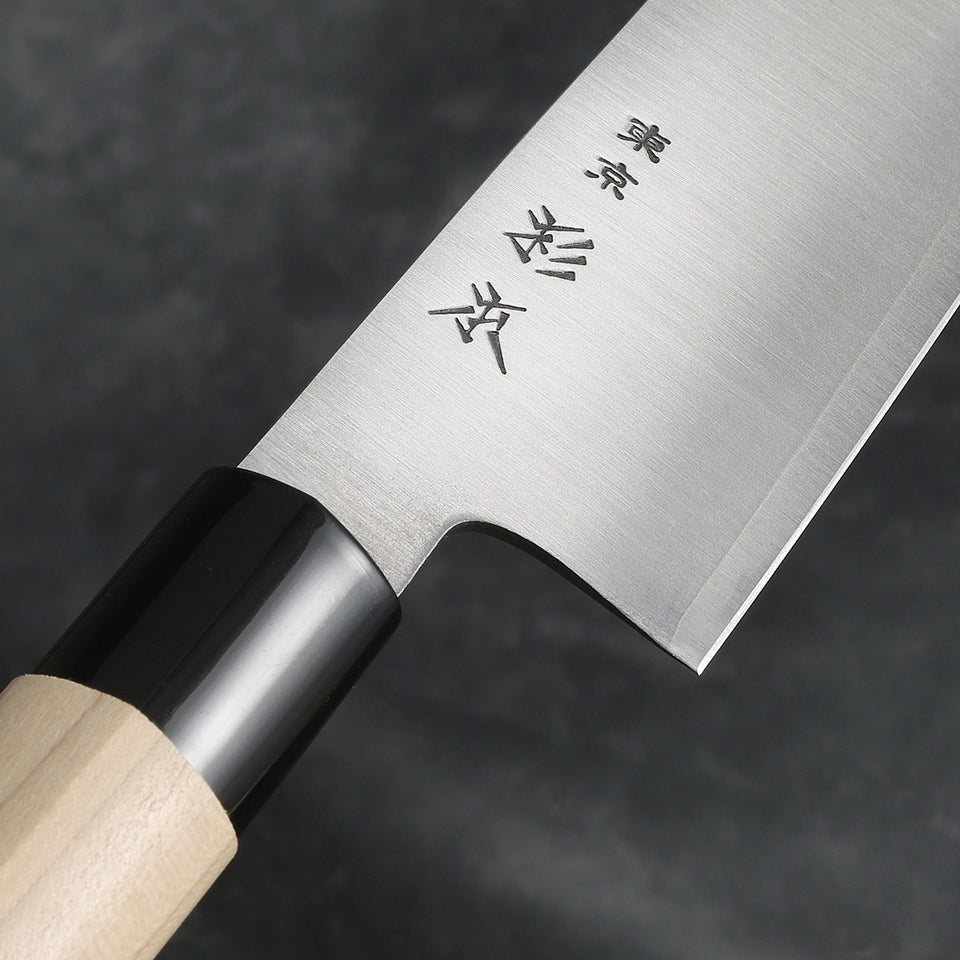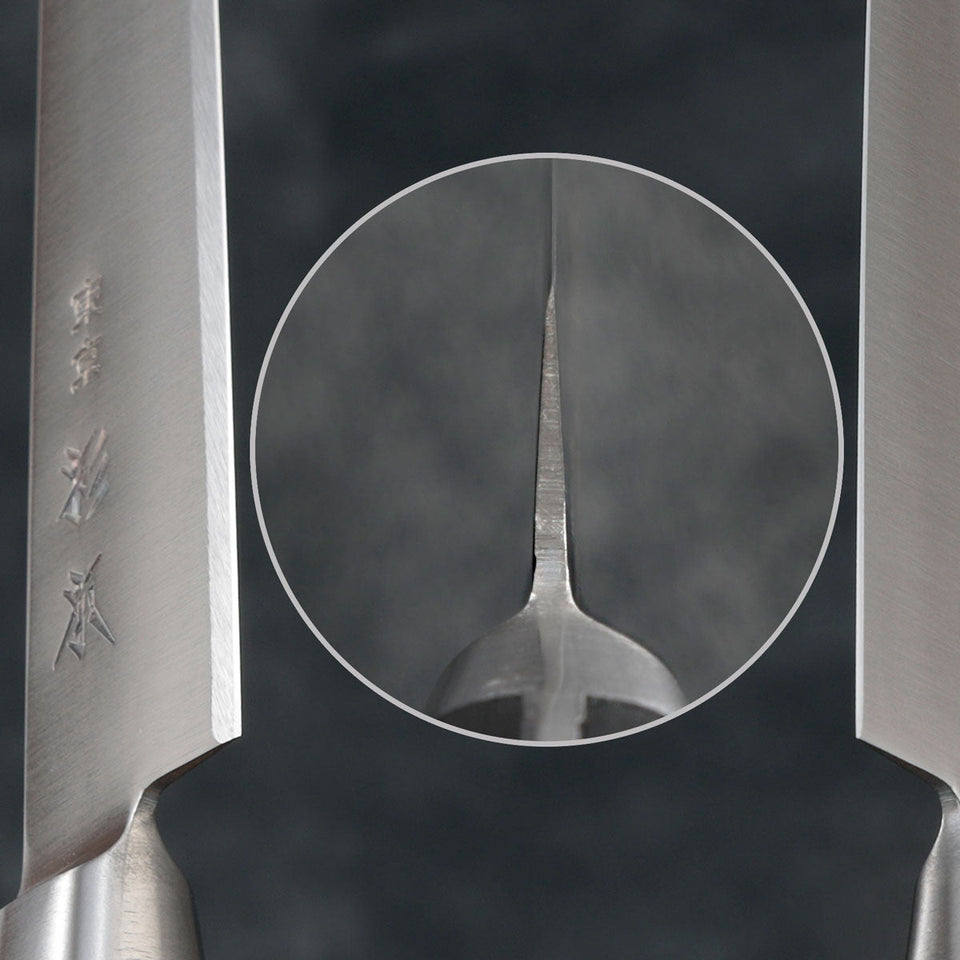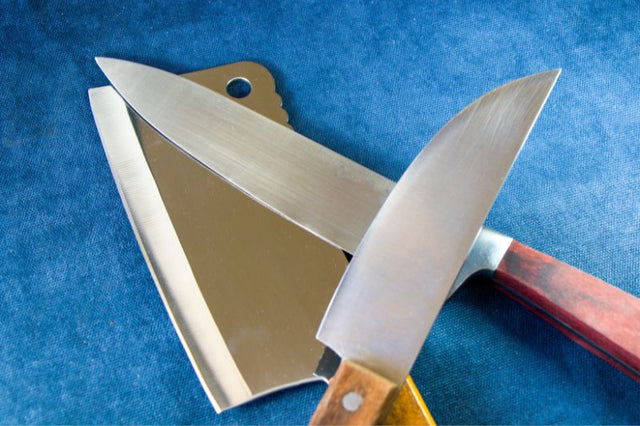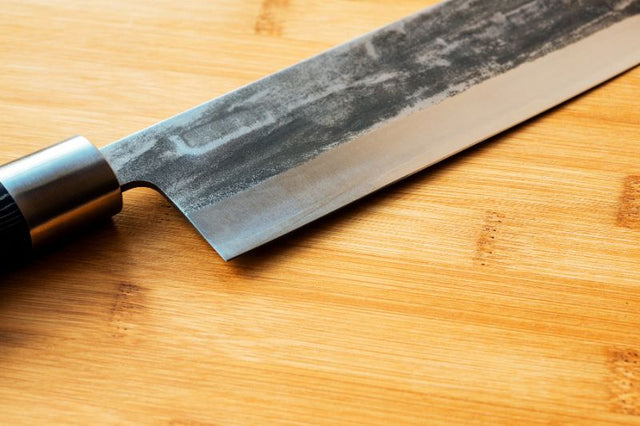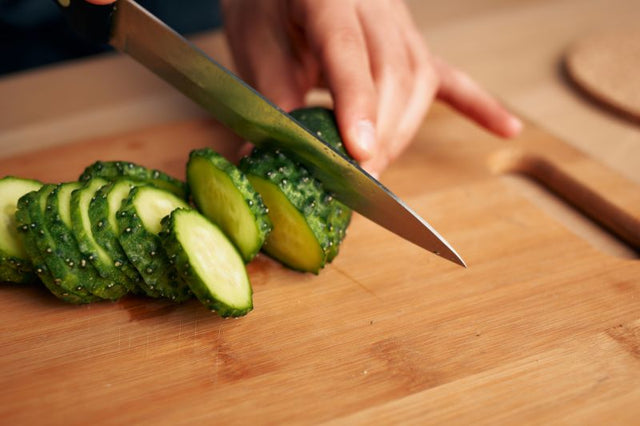Nakiri, Deba, and Gyuto are three different Japanese kitchen knives, each with unique features and functions.
The name "Nakiri" comes from the Japanese word "nakiru,"(奈切る) which means "to cut" or "to chop." The Nakiri knife is a Japanese vegetable knife characterized by its rectangular blade. It has a straight edge and a squared-off tip, which makes it perfect for chopping, slicing, and dicing vegetables. It is typically made with a thin, lightweight blade, allowing precise cuts and maximum control.
The name "Deba" comes from the Japanese word "deba-bocho,"(出刃包丁) which means "pointed carving knife." The Deba knife is a Japanese fish knife designed for filleting and butchering fish. It has a thick, heavy blade typically wider at the heel and tapers down towards the tip. This shape efficiently cuts through fish bones and removes the head and tail. Deba knives are also used for cutting meat and poultry. The Deba knife is typically made with high-quality steel and has a sharp, durable edge that is easy to maintain. It's an essential tool in any kitchen specializing in Japanese cuisine or seafood preparation.
The name "Gyuto" comes from the Japanese words "gyu" (meaning beef) (牛)and "to" (meaning knife)(刀). The Gyuto knife is a Japanese chef's knife used for various cutting tasks, including slicing, dicing, and chopping meat, fish, and vegetables. The blade of the Gyuto knife can range in length from 8 to 12 inches. It has a thin (not thick and not heavy), lightweight blade that is typically wider at the heel and tapers down toward the tip like the Deba knife. This shape allows for maximum control and precision when cutting.
While Nakiri and Gyuto knives are not designed for cutting bones, they may be able to cut through soft bones like fish bones or chicken bones. However, it's important to note that cutting bones can damage the edge of the blade
and can cause chips or dulling of the blade. Therefore, if you need to cut through bones regularly, using a specialized knife like the Deba, designed specifically for cutting through bones and other hard materials, is recommended. The thick, heavy blade of the Deba can withstand the impact of cutting through bones without damaging the blade.
What are soft bones in cuisine?
Soft bones are less dense and easier to cut through than hard bones. Soft bones are typically found in smaller animals, like fish and poultry, and are often edible. Examples of soft bones include the bones in fish like salmon and trout and those in chicken wings or drumettes. When cooked, these bones become tender and may be easily chewed and eaten. However, it's important to be careful when eating soft bones, as they may still pose a choking hazard if not chewed thoroughly.
All three knives are typically made with high-quality steel and have a sharp edge that is easy to maintain. They are essential to any professional or home cook specializing in Japanese cuisine
Get Free Bonus Books

Sign up for free to the Japanese Knife Club to get advice and exclusive articles about how to choose Japanese Knives, and tips and tricks for using Japanese knives.
About the author
Kei Nishida
Author, CEO Dream of Japan
Certification: PMP, BS in Computer Science
Education: Western Washington University
Kei Nishida is a passionate advocate of Japanese craftsmanship, a writer, and the founder and CEO of Japanese Knife Co., Japanese Green Tea Co., and Japanese Coffee Co., all part of Dream of Japan.
His journey began with a mission to introduce the world to the exquisite flavors of Japanese green tea. Through Japanese Green Tea Co., he pioneered the import of premium tea grown in nutrient-rich sugarcane soil, earning multiple Global Tea Champion awards. He then expanded into the world of coffee, launching Japanese Coffee Co., the first company to bring Sumiyaki charcoal-roasted coffee to a global audience.
With a deep appreciation for Japanese artistry and tradition, Kei turned his attention to one of Japan’s most revered crafts: bladesmithing. Through Japanese Knife Co., he made handcrafted katana-style knives, created by a renowned katana maker, available outside Japan for the first time. These exceptional knives embody centuries of samurai sword-making expertise, blending tradition with modern functionality for chefs and collectors alike.
Kei’s journey continues as he uncovers and shares Japan’s hidden treasures—one sip, one blade, and one legacy at a time.


